Coincidence or not, every time NATO has a high-level meeting, something terrible happens in Ukraine. After that, there is a frenzy of accusations about war crimes, indiscriminate targeting of civilians, and insults in both mainstream media and social media. There are “experts” that pop up like mushrooms after rain and an uncontrollable flood of speculations. What is missing is someone who puts a brake on emotional comments and starts to look at the issue from different angles: what may be evident from one side may be completely different when looked at from the other side.
This article is not an attempt to investigate the recent explosion that damaged the children’s hospital in Kiev, nor to finger point at anyone, but rather to establish the facts that may point to some conclusion if one expends the effort.
FACTS
The warhead
On July 8, Russia unleashed a barrage of cruise missiles at strategically important locations such as the Artyom Plant, which is a well-known manufacturer of equipment for the Ukrainian military. This target was carefully selected, and selection was based on careful and long surveillance, meaning that drones, satellites, field operatives, etc., were involved. The target for the specific day was not chosen randomly but after careful analysis, and the decision to strike was made after many pieces of the intelligence puzzle were acquired and placed to reveal a clear picture.
The target was very important, so the targeteers decided to engage it with multiple cruise missiles. Mathematically, it is clear that the probability of destruction is much higher with multiple missiles. The weapon chosen was not by chance: a cruise missile with a 450 kg warhead (the optimal choice for this type of target) guarantees destruction on a large scale, even if it is not a pinpoint hit. Several warheads of this size will obliterate the designated target(s).
Ukrainians are not naïve; more often than not, valuable equipment is relocated to predetermined places. Because of the machinery and other equipment, moving the manufacturing facilities is harder but not entirely impossible. Moving the VIPs is much easier, but one precise hit can virtually destroy the command structure or decision-makers.
In this case, as seen in several videos, the target mentioned was the Artyom Plant—a series of sequential hits by Kh-101 missiles achieved desirable results. What happened with the hospital is highly debatable.
X-101 (Kh-101) striking Artyom Plant
Firstly, there is a video clip showing a flying object, a missile, in a steep dive hitting the area. What is very important to say is that the missile didn’t hit the hospital directly, and the damage on the facade, which is evident in some photos, is caused by secondary effects such as blasts and shrapnel.
Missile striking the hospital area.
Let’s now check the target (Artyom Plant) and the hospital distance: it is app 1.3 km.
About 300 m south is the Ministry of Infrastructure building.
Let's do a brief investigation backward, starting from the position of the hit and working toward the missile. In almost every analysis flooding the media, everyone talks about the missile, and there are two streams: those who categorically say that the missile is indeed a Russian cruise missile and the other that argues for the stray Ukrainian AD missile. More on the hierarchy line in the political world, more acquisitions and this is especially on the pro-Ukrainian side.
At the bomb site, there are casualties, and the building in the vicinity, as well as the transformer substation, seem heavily damaged.
The first step is to determine the level of damage and the impact point and compare it with the equivalent damage that can be produced with a high explosive charge.
The damaged building, a Soviet-built brick structure, has one corner collapsed, while the substation also shows damage from blasts and shrapnel. The hospital is not damaged except for shrapnel (that may be from the flying debris, not from the warhead fragments), broken windows, and other minor consequences of the blast.
The photos and videos show extensive damage to the corner of the building associated with a direct or extremely close-by impact. The walls were broken, the missile hit the side wall below the roof, and the roof collapsed. It is highly likely that the incoming missile hit this area with a steep angle.
To support this, there are a few illustrations taken from
https://pbs.twimg.com/media/GSK-1y7WUAAlZgH?format=jpg&name=large
With the above illustrations, the highly likely trajectory and the impact angle can be determined.
Damage level
Based on the damage level, estimating what kind and quantity of explosives can achieve this is crucial. From the front lines and thousands of damaged buildings, it can be said without a doubt that the amount of explosives to achieve this kind of damage is not in the range of 400 kilograms of high explosives. For the sake of comparison, there are many videos of similar buildings (the material and height) hit by, for example, 152 mm, 203 mm HE shells or 240 mm mines that can produce a similar level of damage.
For buildings and other objects, there are four degrees of damage: complete, strong, medium, and weak. In the case of complete damage, most of the walls, columns, and ceilings are destroyed. Strong is characterized by partial damage to walls, columns, and ceilings; light elements (doors, partitions, roofs) collapse entirely or partially. Medium is characterized by deformation (sagging) of the main enclosing and supporting structures, and mainly secondary structures are destroyed. Weak is characterized by damage or severe deformations of some light elements of the enclosure (windows, doors, roofs).1
The strength calculations and the evaluation of the level of target damage depend on the most important characteristic, such as the natural oscillation period of target T. The literature contains extensive data on the testing of structures on the effects of stimulated or free oscillations with small amplitudes to determine the first few forms of natural oscillations, the corresponding damping coefficients, and Periods of natural oscillations of buildings with brick structures.2
Without getting into the complicated mathematical analysis and technicalities (which can be found in the references), we can assume that for a similar brick building, the degree of destruction shockwave overpressure is 20-30kPa (kilo Pascals) for the strong, 12-20 for the medium and 8-12 for the light damage.
One-quarter of this building was destroyed, meaning the overpressure was 30 kPa or more, but the detonation point was likely very low. Based on the few photos shown previously, the crater could be beneath the rubble if the warhead detonated in the basement, which is plausible because of the kinetic energy. In any case, the fact is that the crater is not visible.
One may ask, is it possible that the building was not hit directly but rather damaged because of the blast? That can cause this kind of damage, but to elaborate further on this case, the crater should be present, and a crater made of 200+ kg of HE is of significant size (look at Gaza and the level of damage caused there). Now, this points to the following question: where is the crater?
The next question is how big the warhead is, and that question is crucial because it can guide us to the missile.
Besides the specialized software or Excel calculations, which are intended for professional use, if one wants to play with the different kinds of blast effects for explosives ranging from 1 kg and up, there are a few online tools such as this one:
https://unsaferguard.org/un-saferguard/blast-damage-estimation
As this online tool states:
“The Blast Damage Estimation tool provides some simple empirical correlations of explosion consequences from the detonation of a certain amount of explosives at distances of concern: Degree of damage to brick structures and windows, blast-related injury levels, and maximum affected range by ground vibration.”
In any case, it is an interesting page that tests different explosives, distances, and the level of damage that can be produced.
Can we really determine the weight of the explosive charge that caused this? The answer is yes but within very wide limits. At a minimum, to cause this kind of damage, with the detonation inside the building below grade (in the basement), the amount is about 30-40 kg or even less. Before jumping immediately to the chart with the warhead sizes of the missile, one needs to understand that this is just an empirical analysis without mathematical support, as well as a nonlinear dynamic FEA simulation that can render more precise results. One may think about this as if someone put 40 kg of explosive in the basement (and this kind of basement may have concrete walls, which is often done in the Soviet Union; the blast is contained within the basement concrete wall, and the path of least resistance is to the basement ceiling to the structure above where the blast waves blow the brick walls outside making the roof to collapse into the cavity.
If the explosive was a HE-FRAG3 type like in some surface-to-air missile warheads, where those thousands of preformed fragments intended to destroy the aircraft are located? Would they make considerable traces on the surrounding walls? The answer is yes, if the warhead detonated at the surface upon impact, traces of shrapnel (the preformed one) would be around, but if detonation happened inside the enclosed space, these fragments (most of them) would be contained inside that space. One should bear in mind that this fragmentation occurs sidewise, so excavation of the underground space may yield some quantities if this happens. If the explosive is HE-type, there will be far fewer metal warhead casing fragments.
Now let’s assess what an X-101 (Kh-101) used in an attack on the Artyom Plant can do to this kind of building. The standard warhead size is about 400-450 kg HE (explosive charge & casing). Simply put, this size is enough to tear the whole building apart. With that quantity, the building would be demolished to its foundations. In simple words, no two bricks of the building will be found together. So how can this building still stand if a heavy warhead hit it? This is where speculations prevail. One would be that the missile didn’t have the standard size warhead, the other may be that it detonated deep underground, and the third would be that it didn’t hit directly but to the side, and the crater was covered with debris. And what if it was just a very small warhead with a yield below 100 kg? In any case, every combination of blaming and counterclaim is possible. Still, the hit and effect on the highly likely unintended target is, with high probability, not typical warhead size intended to destroy heavy structures. For comparison, one can search for the Artyom Plant damage level or other targets that were hit by cruise missiles, such as hotels and other buildings in Odesa.
The missile
When the fragments of the video popped up, there were volleys of comments ranging from Kh-101 over PAC-2 to NASAMS AIM-120, depending on which side the individual was on.
Those few video frames are the subject of countless analyses, comparing models and photos of the missiles with the help of some photo enhancement software. Nothing is wrong with that if it yields results, but it is just speculation at the time of this writing. Some missile debris popped up, and some claimed they identified the missiles by numbers. To be honest and objective, if debris, fragments, or parts are present at the site, that will be one of the significant pieces of evidence, but there is a big “but” in this: debris or parts can be brought from other sites, and nothing in Ukraine is what it seems to be. PR, propaganda, and brainwashing are at the highest level. So, the bottom line is that if the one doing the investigation didn’t pick up the missile part at the site, meaning excavated it from the rubble, there is a big chance that evidence is planted. This applies to both sides. Long story short, the author of this text can identify missiles by their parts, components, or debris, but if the author is not involved in the investigation right from the beginning, there is a big “?” regarding the collected evidence and the reason for that is explained above.
The “Perpetrators”
Let's now see the available photos of the actual missile.
These photos and countless uses are the subjects on their own. This is the piece of evidence that is most used and abused by both sides.
According to most posts and the similarities, there are two possible perpetrators”: Kh-101 and AIM-120.
Extraction from the video clip shows a blurred photo:
What follows are the skills of photo manipulation skills (as previously mentioned in the text).
One of the telegram channels published this:
Followed by this:
The other side responded immediately with this:
The bottom line is that both approaches have visual similarities; however, only one is correct. At this moment, to stay on the objective approach, any personal opinion and alignment with a particular side have to be put aside, but in this case, it is tough to do that.
So, the Ukrainian side and supporters claim, based on the photo evidence, that the missile is Kh-101. Looking at several of their models, one can sense that they are right. But any manipulation with photos or videos creates distortion. The same applies to the Russian side as well. The author believes this photo evidence is not crucial because of the enhancement options and means for manipulation. But this should not be discarded by any means, and it must be evaluated in conjunction with all other evidence. Judging just on the photos extracted from a low-quality video is not recommended.
The third fact - Air defense
Kiev and its surroundings are the most defended places in Ukraine. Patriots, NASAMS, different SHORADS, and everything considered most capable are gathered around and within the city borders. Any incoming threats, from slow-moving drones to cruise missiles to ballistic and hypersonic missiles, can be detected to some degree. Positioning AD assets inside the urban area provides protection against direct attacks and creates a fertile environment for mishandling. It is not uncommon for launched missiles to lose their guidance, and the warhead not destroyed during the self-liquidation process in the case of a miss slams randomly onto civilian objects. There are at least six documented cases, without accounting for the falling propulsion compartment and parts that can also cause damage.
On that particular date, the regional AD command had proper information about the missiles' approach, dispatched the orders for engagement, and the lower tactical units reacted. In this case, the order was to engage everything that flies. Some of the attacking missiles may have been hit, but as seen in the video, at least 6 slammed the Artyom Plant.
What might have happened with the missiles launched (supposedly) on these cruise missiles? The general rule is to launch 2 AD missiles per incoming target to achieve a high probability of a hit. If these missiles were launched and missed, their self-liquidating mechanisms would likely be activated, but if one didn't, the missile would become the "city attacker" itself.
This is one plausible option. With this, a social media fight among supporters of either side has enough pros and cons to continue.
What is the next?
Based on what was previously said, all factors must be involved in the investigation: the estimated size of the warhead, two “best” candidates for the perpetrator based on the video evidence, and something that both sides, including the whole pact for one side, are not willing to share—radar records and surveillance satellite records.
What is interesting in the post-attack analysis is that the Ukrainian side went full afterburner in PR: scores of people formed human chains distributing water and aid to the site, some of the medics had their white uniforms stained with blood, victims are shown with bruises, cuts, and bandages, children toys sticking out from the rubbles, to name few. these things may look normal, as seen in a parallel place where a multi magnitude bombings are ongoing - Gaza. Firstly, the debris level in Ukraine is just a fraction of the similar sites in Gaza, and the use of human chains is nothing but a cheap PR stunt. The road was available and clean, so supplies in much larger quantities could be brought simply by car. One medic with half of his blouse covered with blood and pants without a single stain of blood (or red paint) is awkward. Getting into evacuation with bloody victims would render his whole outfit stained with blood. So, this also looks awkward. The third is the position of the kids' toys - the car and the football. Sitting at the top of rubble is clear evidence that they were planted there. So, PR stunts and cheap marketing are the shortest descriptions.
Conclusion
The hospital was not the intended target. The damaged building is likely not the intended target as well.
The explosive was not heavy and is likely not from the typical cruise missile charge, even with the activation of unburned motor propellant. This does not exclude cruise missiles because they may be decoys or have some modified charge, another stream that may be explored.
The visual records are of low quality and prone to heavy editing, so the validity of the comparison is questionable, and the investigation can’t be judged solely on that.
AD units in the area were active. It is not publicly known how many missiles were launched and from where.
Hypotheses like that there was a secret meeting in the building or that the target was actually a Ministry of Infrastructure meeting may be considered. Still, there is no evidence to support this.
Sabotage and some heavily modified third types of missiles are in the domain of conspiracy theories and should stay there.
As usual, the blame game will continue until something else happens, and everything starts from the beginning.
In any case, the reader should conduct further research and, if possible, try to stay unbiased if that is possible.
If you like the article (and much more articles regarding military subjects will come) you can buy me a coffee:
https://www.buymeacoffee.com/mmihajloviW
I. Balagansky: Damaging Effects of Weapons and Ammunition, 3.5 Evaluation of the Damaging Effect of Shock Waves on Various Objects.
Ibid
High Explosive-Fragmentation
[i] Edited by Piquet (editPiquet@gmail.com)

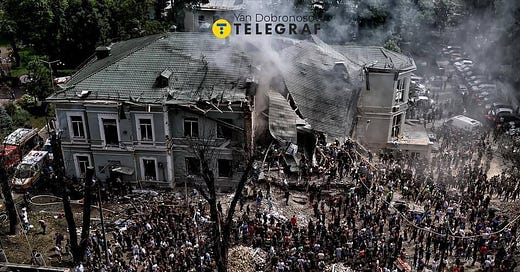




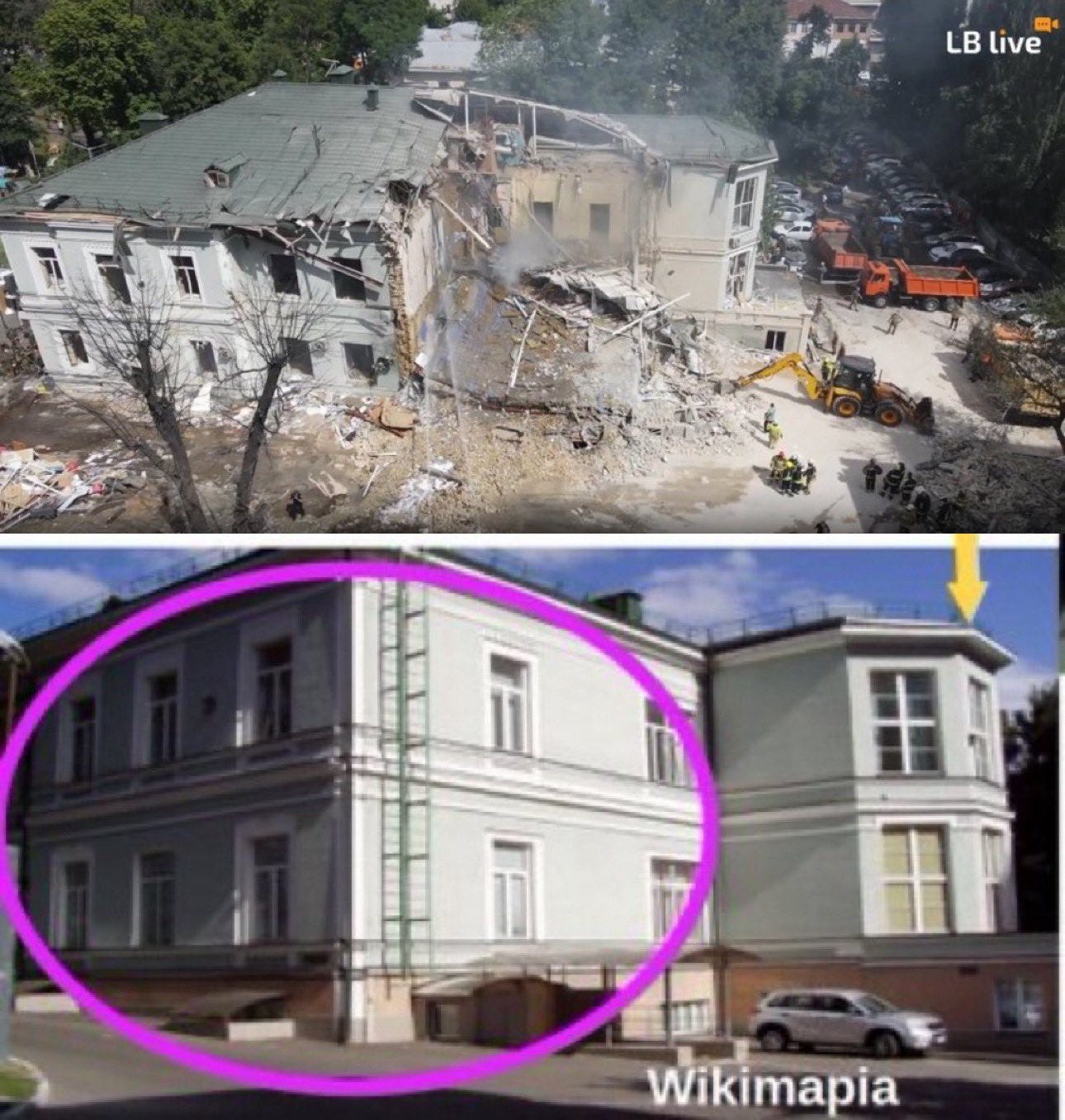
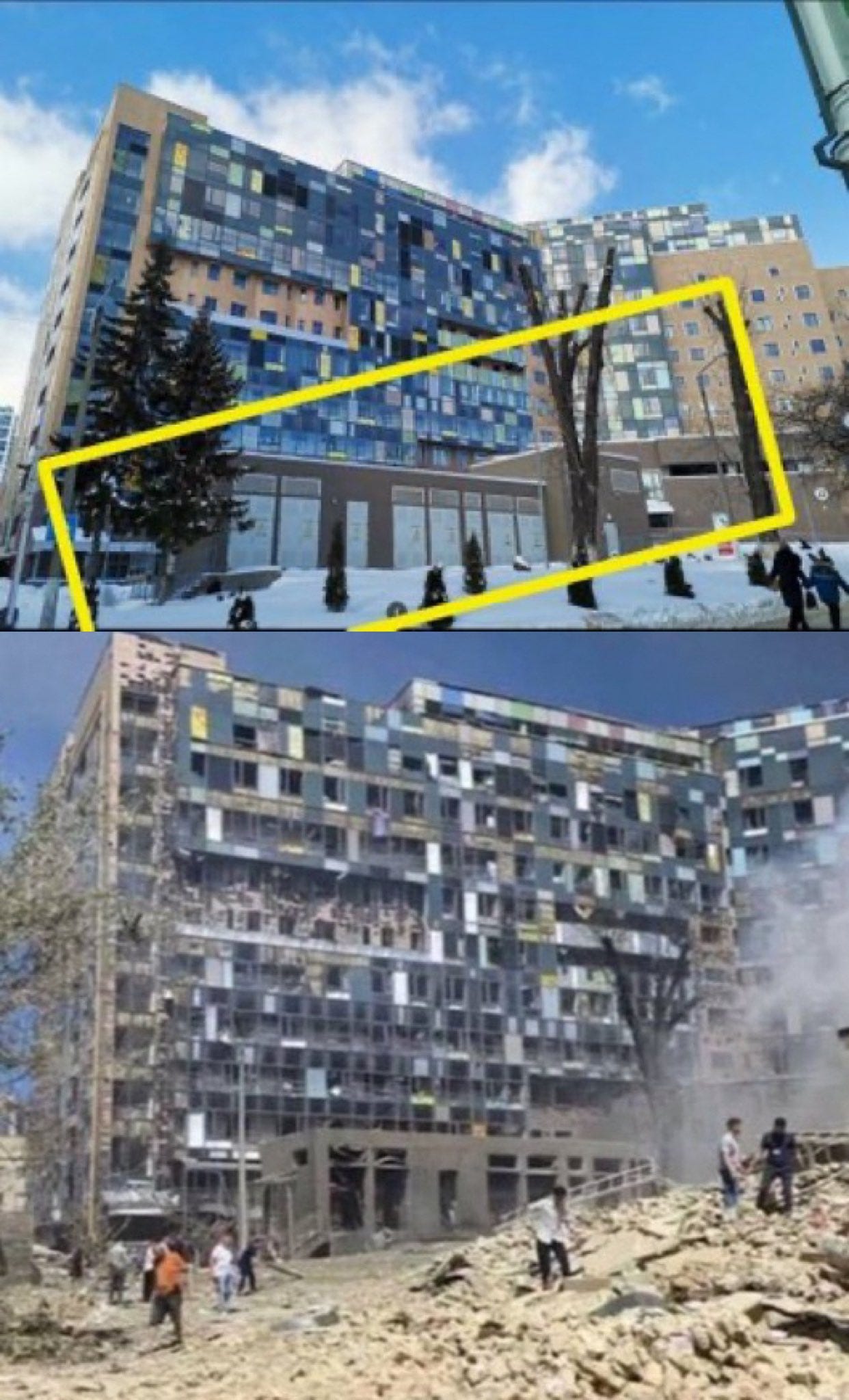
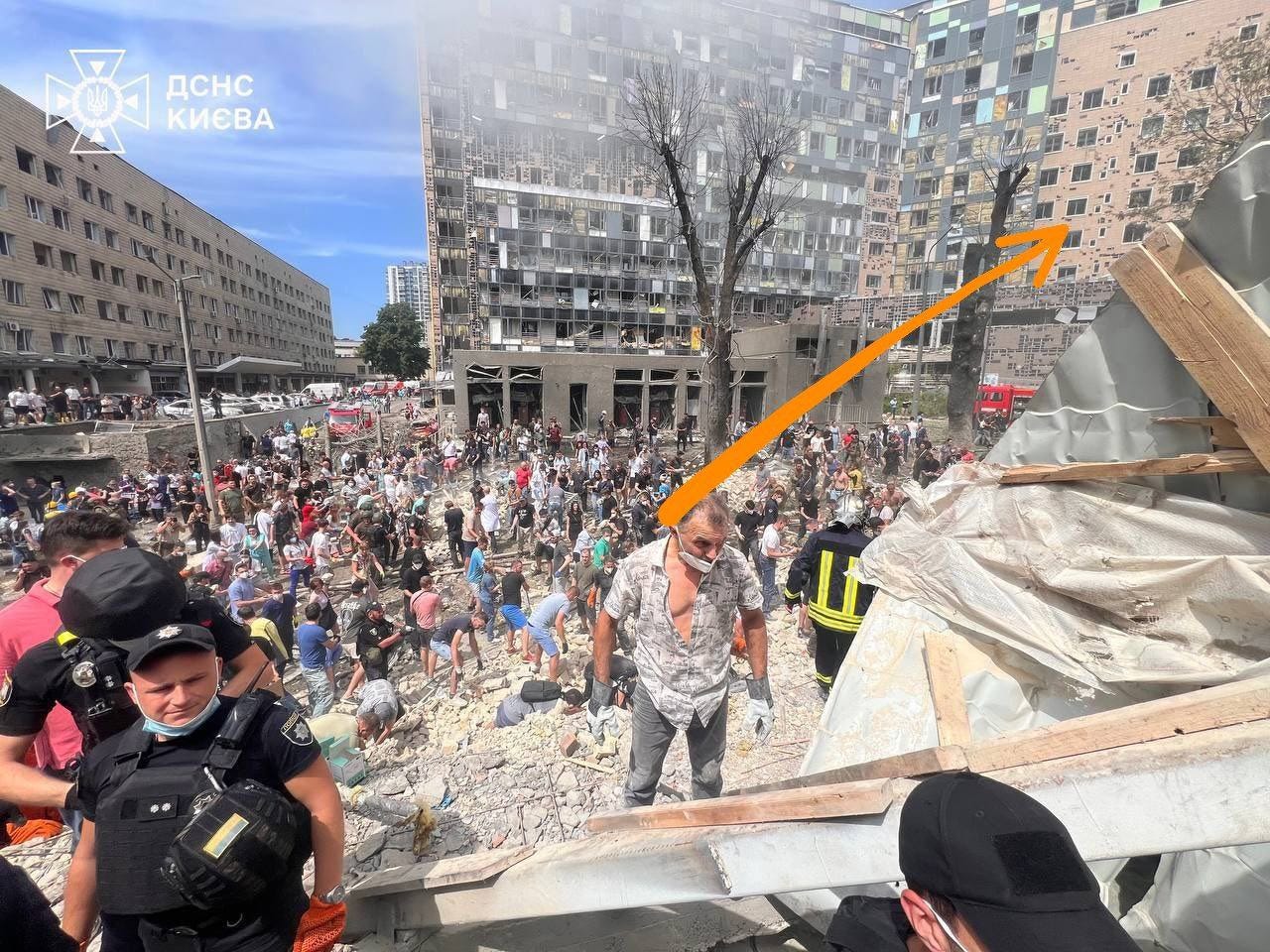
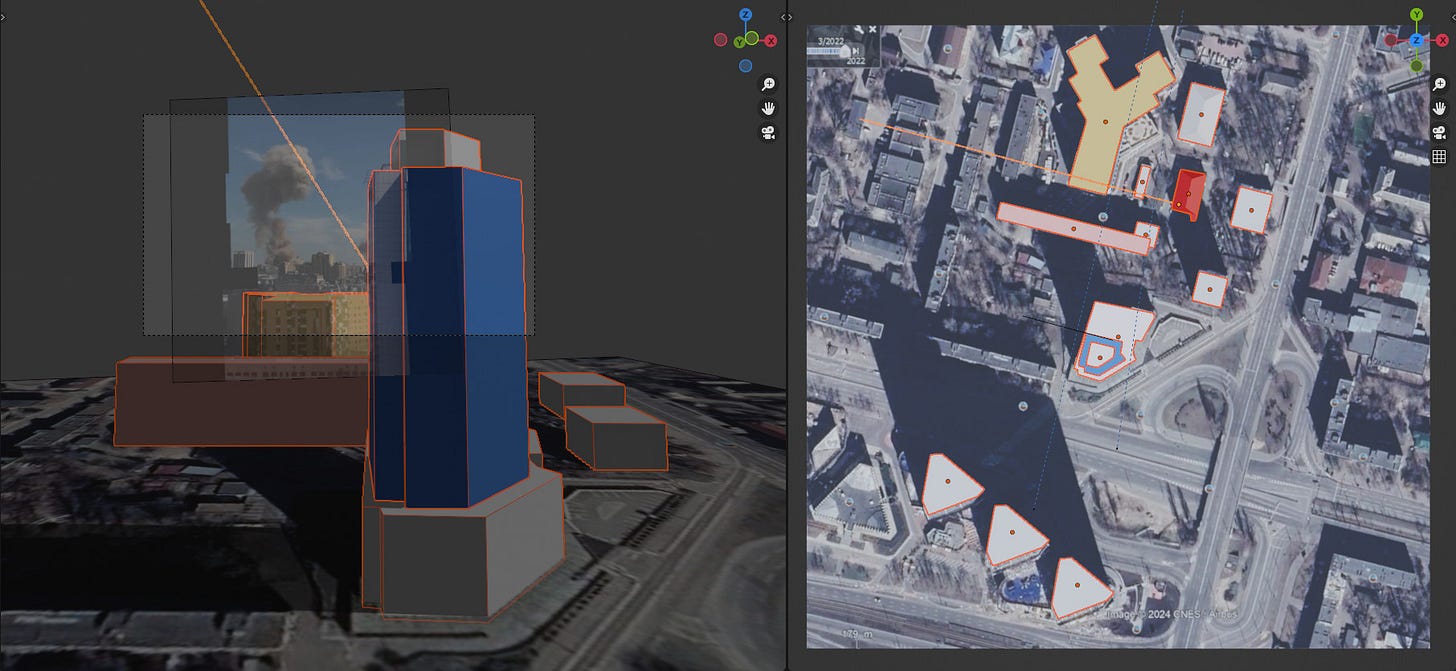
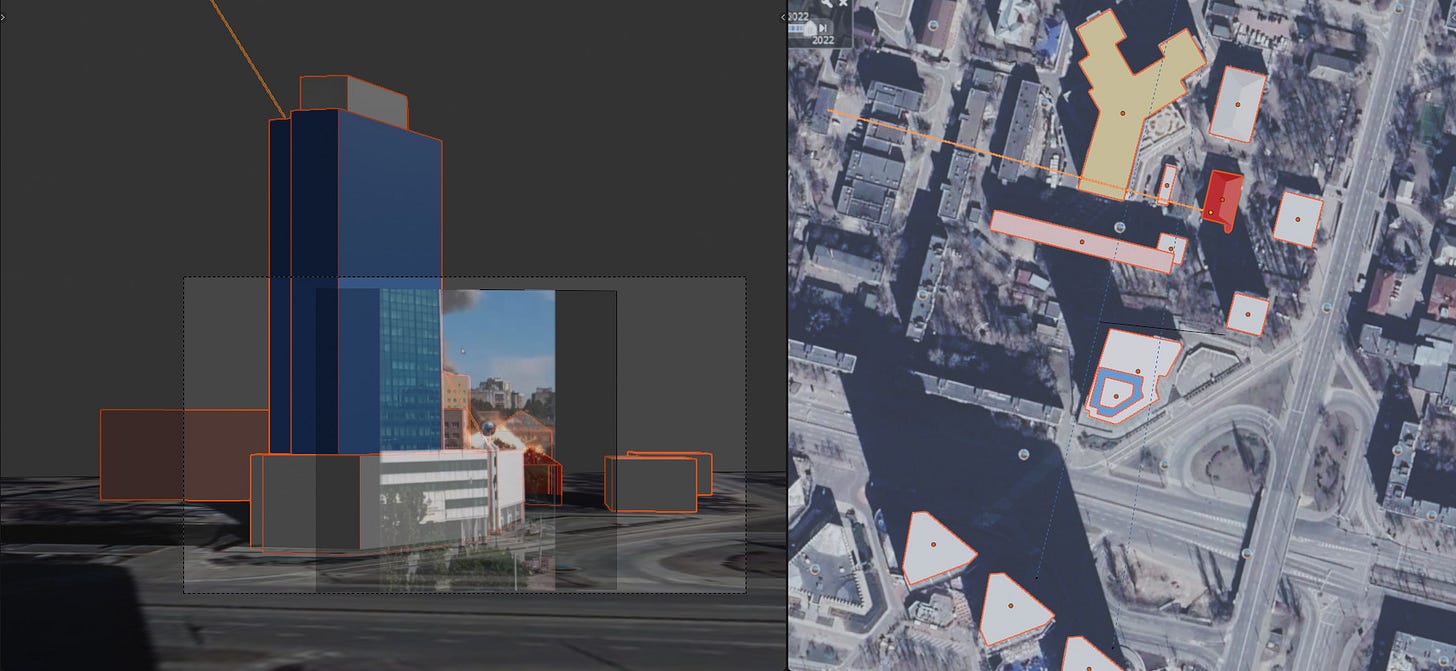

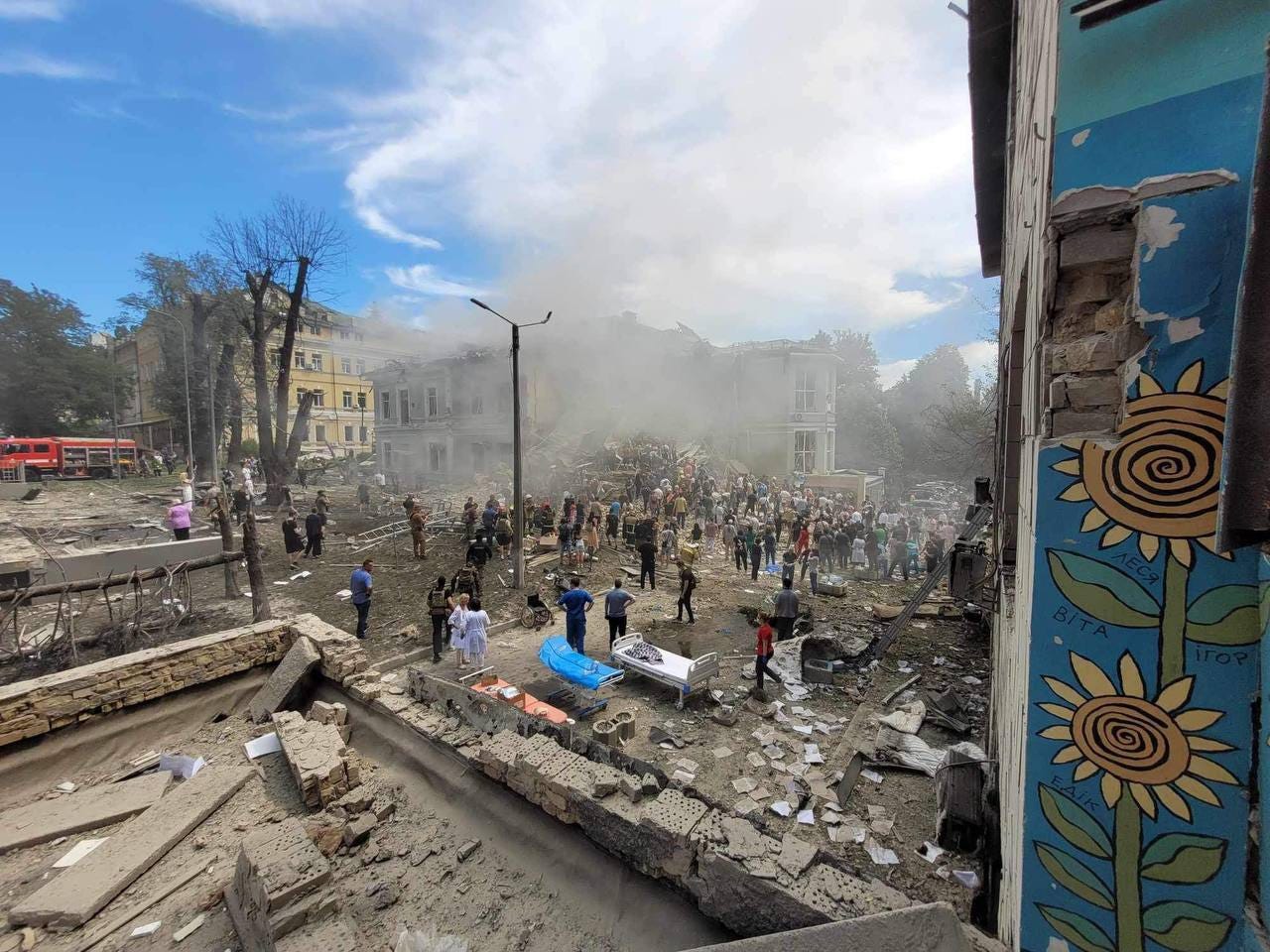





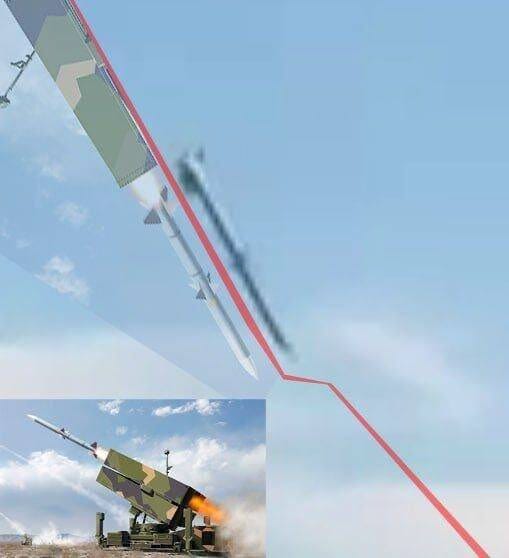
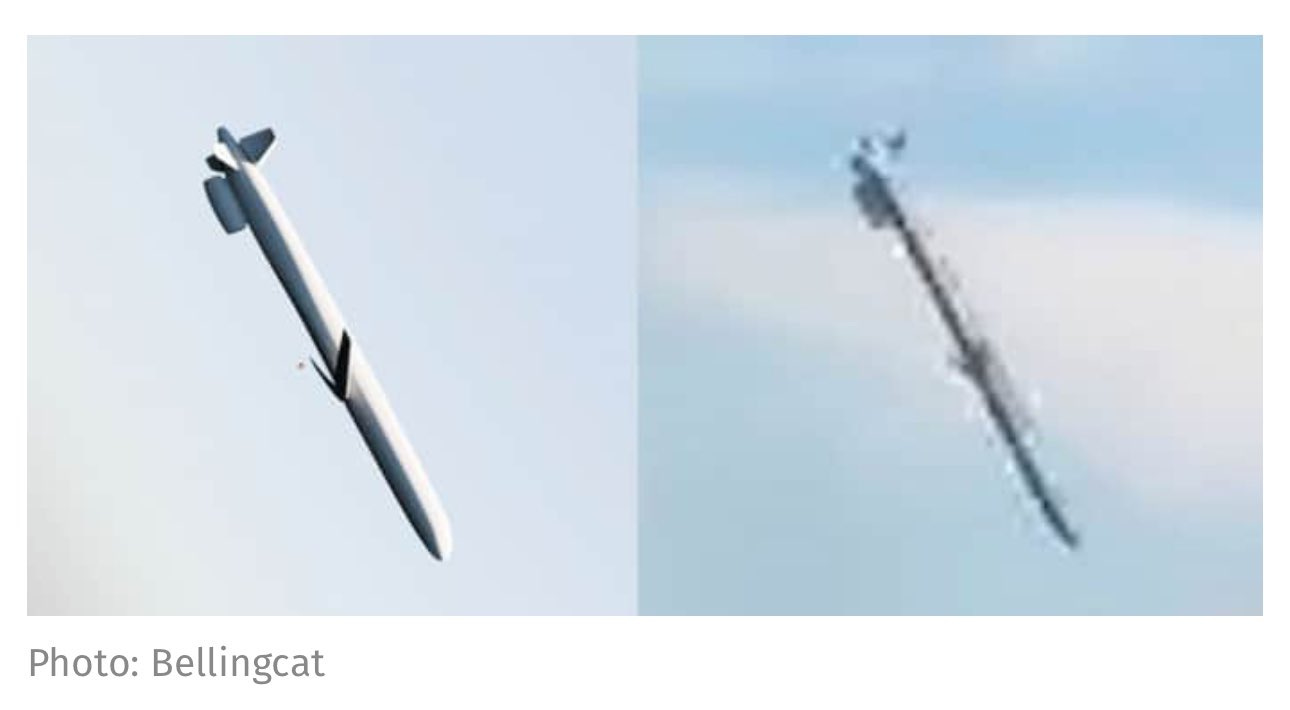

1. It wouldn't matter if Zelenskii were to personally and officially release a video in which he fired a missile at the hospital while laughing manically. Russia will be blamed.
2. Ukraine has form in using hospitals, schools, etc. for military purposes, then crying foul when they are hit.
Nice approach, much appreciated. Few addenda and minor corrigenda. The hospital consists of many buildings, one of them was hit. Well, the main building (late Soviet architecture) wasn't hit. It is not correct to say "the hospital wasn't hit". The video, despite its bad quality, allows to measure the length of the missile by comparison with a building in appropriate (the same) distance, which in this case is the main building of the hospital, a 10 story building. The height of one floor over all is approx. 3 m - so the missile must be at least 5...6 m long. Definitely not AIM-120. I don't know, what kind of missile that was, X-101 doesn't fit either, but comes close in lenght. Arrival from a Western direction excludes ballistic missiles fired from the Russian side.
The hit building, a 2 floor building + basement with entrance from outside (pre WW2 architecture) is described as dep. of toxicology. It doesn't look to be equipped with bedrooms, looking more like a lab without patients inside. Considering that some 100 bedrooms in the main building and other corpuses got their windows blown inside, the numbers of wounded and dead is to be explained by glass wounds only and seems even slightly low.
The building could have been hit by intention - either some B or C lab or staff of such or even a separate building for placing other staff hidden inside a children's hospital.